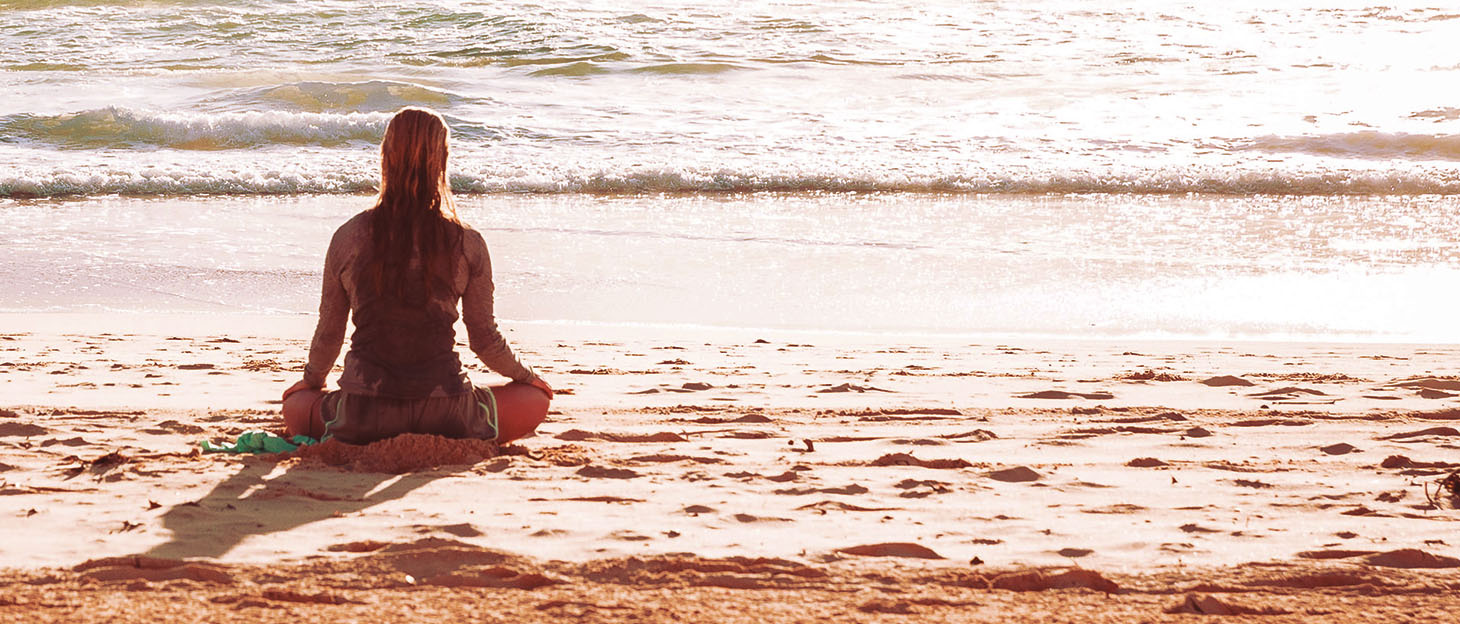Your diabetes is as unique as you are but that doesn’t mean you can’t find inspiration in other people’s diabetes management routines. We already know that an active lifestyle is important for people living with diabetes but it can take time to find an activity that’s right for you.
Being active doesn’t have to mean marathon running or cardio workouts. We spoke to Rachel from ‘Yoga for Diabetes.’ Rachel is a fantastic author, blogger, and yogi living with LADA (Latent Autoimmune Diabetes of Adulthood). Rachel teaches people how to incorporate yoga into their diabetes management.
In this article, she’ll tell you all about her passion for Yoga and how she uses it to manage not only her diabetes but also her mental health and all-round wellbeing. She also shares a short practice for you to try at home!
Let Rachel teach you all about the benefits of Yoga and how it helps her keep her diabetes in check.
Can you tell us a little bit about your lifestyle before your diabetes diagnosis?
I started practicing yoga when I was in my teens so by the time I was diagnosed at 42 I had a very healthy lifestyle. I practiced Yoga, breathing and meditation in the morning, incorporated ayurvedic routines (Ayurveda means the science of health and is the sister science to yoga) like tongue scraping and daily oil massage and had a vegetarian diet. I always did my best to get a good night’s sleep. That’s why the diagnosis didn’t make any sense to me. How could someone so healthy get diabetes?
Did your diabetes diagnosis encourage you to explore new sports and activities?
My doctor encouraged me to do more than just practice yoga, so I took up walking as a regular activity. An hour walk in nature is soothing to my soul. Especially when my blood sugar levels are all over the place.
When did you start practicing yoga?
I started yoga at 17 in high school, more than 37 years ago, but I didn’t take up a serious yoga practice until I was 23. That’s when I started to see results and changes in both physical strength and flexibility and in my attitude of mind. I became more flexible in how I problem solved, more trusting and opened up to life and its beauty and mystery.
How and when did you realize that you could incorporate yoga into your diabetes management routine?
This happened immediately after my diagnosis. I remember returning from the doctor’s office and sitting on my mat, reasoning that if yoga had helped me so much already then surely it could help me manage diabetes.
In the beginning stages I used the subtle practices of yoga to soothe the shock and heal my nervous system. I focussed on a sustained breathing practice, more concentrated meditation practices, time in postures that were calming and restorative and working with visualisations (yantras) and sounds (mantras) to build resilience.
I also considered my ayurvedic constitution, the unique mix of elements in my system, and how I tend to respond to stress. Knowing that I can be overly sensitive to stimuli, I made sure to follow a regular daily routine, to avoid excess stress and to reach out for support.
How does yoga help you manage your diabetes?
In so many ways! Firstly, it is my go-to for managing my reaction to high and low blood sugars. I use the tools from the philosophical branch of yoga, called Self Knowledge. I might look at a high blood sugar and remind myself that my ideas about blood sugar, diabetes etc are just that, ideas.
I am the one having thoughts about diabetes, no one else. If I am the source of the idea, I can also change my idea. I can also know the one in whose presence all ideas come and go. This enables me to see that I cannot be what I have. I have diabetes, I am not diabetes. This level of depersonalisation has given me breathing space to allow more trust and acceptance into my life. It doesn’t mean I have it all together when I go into a severe hypo though. Rather it has given me the power to bring insight and reflection to the bigger picture. The goal of yoga is freedom. To me being able to gain perspective gives me that freedom.
Another major way yoga supports me is in increasing insulin sensitivity. If I have a spike, or am feeling insulin resistant, I’ll do a short practice which engages the larger muscles in the body. In just 15 minutes I can see the trend arrow going down on my CGM. I practice twice a day so overall, I have noticed that I am way more sensitive to insulin in general. As the effects of yoga are cumulative.
The last major effect of my yoga practice on diabetes management is how quickly I bounce back from a stressful event, like a hypoglycemic episode. I have solid tools in place to placate my nervous system. I use sustained controlled breathing and simple hand gestures called mudras to calm and soothe while also making sure that I take time to practice yoga nidra, which is a form of guided relaxation.

What other areas of your life does yoga help you manage?
Yoga is the fabric of my life, it is what sustains me. The goal of yoga may be freedom, but the word yoga means oneness, wholeness. Yoga is who we are, it is not a state to be reached. When we know ourselves as the yoga itself, know ourselves as an inseparable part of the totality of creation, there isn’t one thing that isn’t touched or affected. Hence my relationships, my approach to the environment, the food I eat, the way I share and offer up my gifts as a human being are inspired and devoted to what I have gained from living yoga. There is a beautiful saying from the teachings of yoga. What can one give back to creation that creation doesn’t have already? This is a beautiful question to contemplate.
What advice would you give to a fellow person with diabetes that would like to explore yoga?
Yoga is so accessible these days. We can easily find a class suited to our ability and type of diabetes online, however it is valuable to dig a little deeper and find a teacher who you resonate with.
Someone who can gently guide you to find the right practice for you. If you head into a yoga class without the proper support, there is the possibility of injury or perhaps even feeling challenged when your blood sugar drops low in a class. A teacher without much experience, especially in an in-person setting might not understand what is happening or misunderstand your needs.
I encourage everyone to disclose their condition to their instructor and make sure that you can have whatever you need with you on your mat. I.e. CGM, glucose tabs etc. There are quite a few experienced people living with diabetes who teach yoga. Those teachers are amazing guides having had a lived experience of diabetes.
My other recommendation would be to start slow. Finding the right pace and level and a shorter practice will also help you find the right combination if you are taking insulin or other medication. Some practices can be very vigorous and drop your levels fast. I had to find out through trial and error what was the best rhythm for me as a practitioner with diabetes. It took patience, experimentation and a slow sustained enquiry over time.
Can you share with us a simple practice to try at home?
This is my absolute favourite practice for calming the nervous system. It’s called the Sunrise meditation. It’s a three-part breath which uses a colour visualisation. The moment of sunrise is evocative of new beginnings, freshness and a sense of expectancy. In yoga it is seen as a time of renewal and reset. Bringing the colours of the sunrise into your body supports you to internalise that fresh, peaceful, hopeful feeling. You can practice this at any time of the day or any time you want to invoke a sense of calm.
Begin the practice in your most comfortable relaxed position. This could be sitting on a chair, sitting on the floor, or even lying down.
Close your eyes and focus on your breath. Let your breath come and go in a natural way. Observe where you feel the breath. Is it in your nostrils? Or more in your chest or belly. Stay relaxed and just observe. There is no ‘right way’ to breathe.
Next, on an inhale, imagine that you are breathing in a blue, sky-coloured light that moves through your body from your feet all the way up to the top of your head. The blue coloured light moves through you in one continuous inhalation.
When you are ready, drop your chin slightly, like you are holding an orange under your chin, pause the breath and visualize a pink rose mist swirling into every cell of your body. Make sure to only hold your breath briefly or for a period of time that is comfortable. If you find it challenging to see the mist moving through the whole body as you hold the breath you can just relax and take breaths while you complete the visualisation.
On an exhale, breathe out and imagine a golden light surrounding your entire body. Again, move as fast or as slow as is comfortable on the exhalation.
The idea is to take an inhalation, visualise the blue light, pause the breath for the same length of time, visualise the pink mist and then exhale again for an even count, visualising the gold light. If this feels challenging in any way you can still imagine the colours and let your breath come and go naturally.
Repeat the visualization as you continue to breathe in and out through your nose. You can continue for as long as is comfortable. When you are ready, gently open your eyes and move along with your day.
If you’d like to experience an audio version of the practice you can find it here.
https://soundcloud.com/the-flying-yogini/the-equalising-breath
If you want to learn more, here is another great interview with Rachel.
The mySugr website does not provide medical or legal advice. mySugr blog articles are not scientific articles, but intended for informational purposes only.
Medical or nutritional information on the mySugr website is not intended to replace professional medical advice, diagnosis or treatment. Always consult a physician or health care provider with any questions you may have regarding a medical condition.





